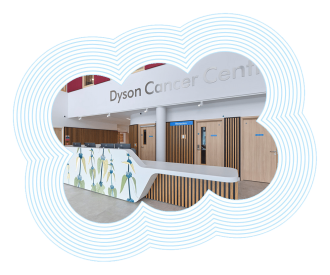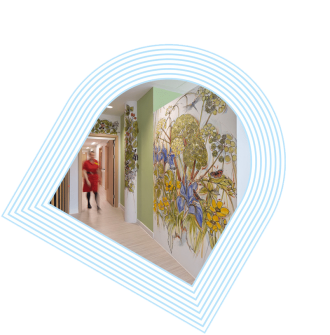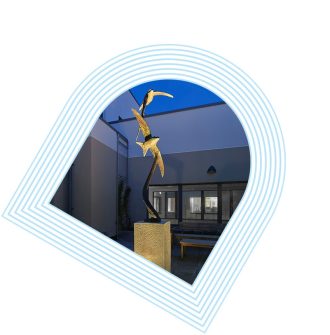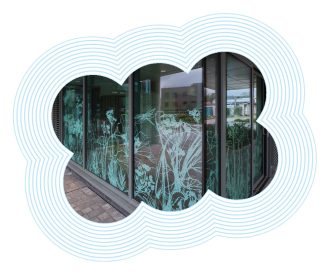Photography – William Beck
Sensing Woodland by Chrystel Lebas
From Dusk till Dawn, 2024, single channel 4K video projection 8 channels sound, 64 min. Loop.
Chrystel Lebas is a renowned artist best known for photography, moving image and sound works that explore the relationship between human beings and the natural world. Her work has been exhibited internationally at institutions such as the Wellcome Collection, London’s V&A museum and Brussels’ Palais des Beaux Arts. Chrystel Lebas’ installation at the Centre offers an immersive experience including a looped one-hour film recorded in an ancient bluebell forest in Wiltshire, tracking it from dawn to dusk in the spring and paired with a multichannel soundscape.
It captures rain on leaves, wind, calls from foxes and deer, bees buzzing, mice scuttling in leaf litter and birds chirping. Referring to fairy tales, stories and legends, the ancient forest was chosen for its visual impact as well as its symbolism. Translating the sublime power of this ancient forest to the Ambient Room, the installation creates a sense of awe, reminding us of our reliance on the natural world.
Sound recording and design: Chrystel Lebas, Paul Richardson
Filming: Chrystel Lebas
Post-Production: Levin Haegele, Oliver Sutherland Spike Island
Audio Visual Installation: Spike Island
Plant Portraits by Chrystel Lebas
Chromogenic prints: Photograms framed with Museum Glass
Drawing from the ecologist and botanist Sir Edward James Salisbury’s approach to documenting species, Lebas collected ‘weeds’ and placed them directly onto colour photographic paper in the darkroom under the enlarger light. Progressively changing the cyan, magenta or yellow filtration, each colour changes the way the plant emanates from the paper’s surface. The filtration values and exposure times are carefully annotated beneath each photogram.
Some of the chosen plants are part of the species that Salisbury researched extensively and described in his book, Weeds and Aliens. For example, Shepherd’s Cress, scientifically known as Teesdalia nudicaulis, is a common weed found around the world, however the plant is considered endangered in some parts of its native range due to habitat loss and overgrazing. It also belongs to the mustard family and has been used in traditional medicine for centuries.
http://www.chrystellebas.com/








